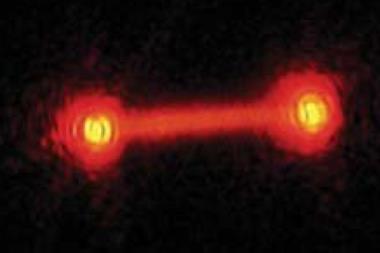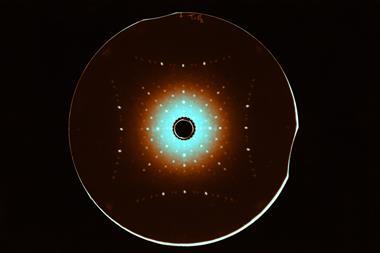A noticeable number of researchers are misusing x-ray photoelectron spectroscopy (XPS) when analysing perovskite solar cells, according to a team in China.
Perovskite solar cells are susceptible to environmental degradation so many research teams are investigating how they can limit this using surface passivation strategies. The past 10 years has witnessed a rapid increase in studies featuring both perovskite solar cells and x-ray photoelectron spectroscopy as part of these efforts. But ‘as the number of publications increases, many researchers overlook the fundamental principles behind this [XPS] technology,’ says Chi Li at the Fujian Institute of Research on the Structure of Matter. To underline these concerns, Li and co-workers have analysed the literature on lead-halide perovskites to get a clearer picture of what they describe as ‘unconsciously inappropriate XPS analysis’.
Their analysis identified four main issues: misinterpretation of chemical shifts in XPS spectra; misinterpretation due to a disturbed chemical environment; lack of awareness about the property of the passivator and misquoted references.
Li and co-workers note that, in some studies, a chemical shift was mistakenly attributed to the core electrons of the central atom when, in fact, it was influenced by the electronegativity of the bonded atoms. Ayse Turak, an expert in surface analysis techniques and perovskite cells at McMaster University in Canada, says this is a ‘classic trap’ that many researchers fall into.
The next pitfall, which they attributed to inexperienced XPS users, was artifacts in chemical shifts under the same chemical environment. According to Li, this highlights the importance of understanding the physical principles behind characterisation techniques.
Li’s team also observed contradictory results when researchers failed to establish a clear relationship between the XPS chemical shift and the influence of the specific passivator used. Turak emphasises that it’s important to consider the surface sensitivity of XPS and its implications for interoperating perovskite materials. ‘Some of the interpretations can be heavily influenced by the fact that you’re not really probing the bulk, you’re probing just this passivation layer and the near surface region of the perovskite in contact with that layer. You’re really getting information from the top layer that’s interacting with the passivator. And how that changes your interpretation is quite important to remember.’
The final observation from Li’s team was that misquoted data has created biases in the literature. Li says that to avoid this pitfall, researchers should ‘seek truth from facts’ and be sure to fully understand previous studies before using them to support new research.
Li’s team’s insights have already received favourable attention within the perovskite community. ‘Inappropriate data analysis can mislead other researchers and I hope that this critical overview can help researchers avoid misunderstandings when applying XPS technology to interpret their experimental results,’ he says.
‘Perovskites are used in a wide variety of fields because they’re a very hot material,’ comments Turak. ‘It’s easy to fall into the trap of confirmation bias. [Misinterpreted data can] lead the field in completely the wrong understanding of what is really happening in the system.’
References
C Li, N Zhang and P Gao, Mater. Chem. Front., 2023, DOI: 10.1039/d3qm00574g












No comments yet